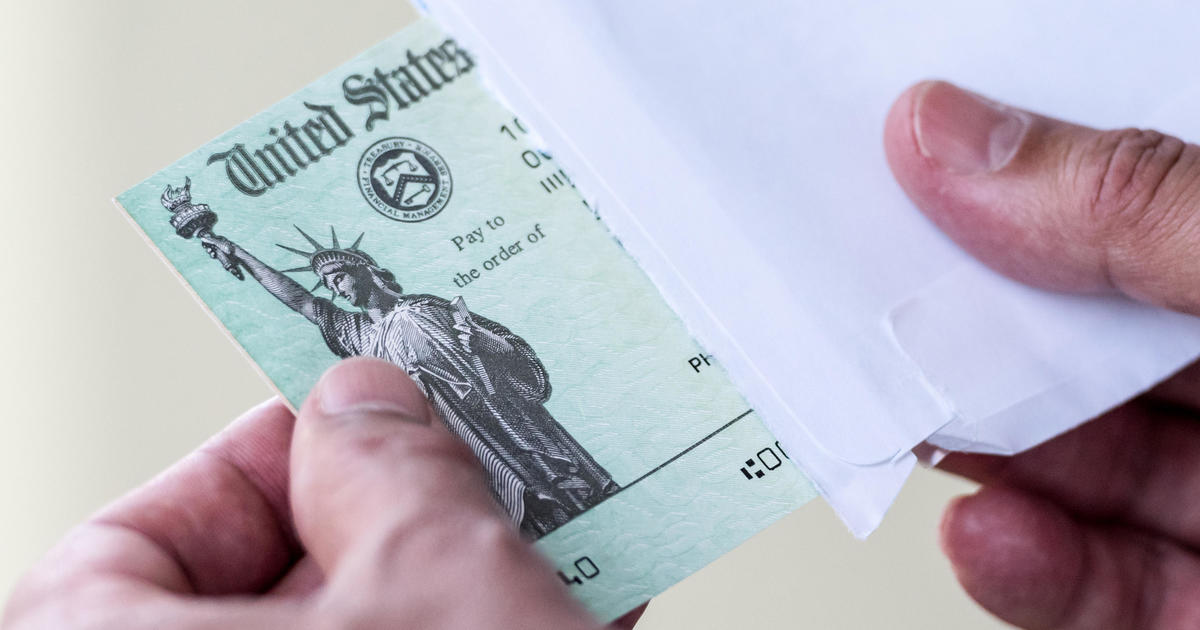The House Democrats’ revised stimulus bill would restore some popular programs that were devised to help families weather the coronavirus pandemic. Chief among them: $1,200 per adult stimulus checks targeted to middle- and low-income families.
Democratic lawmakers introduced the measure ahead of negotiations with Treasury Secretary Steven Mnuchin. In a statement, House Speaker Nancy Pelosi said the bill reflects a package that’s $1.2 trillion less than the Democrats’ original HEROES Act in May, which failed to advance amid opposition from Republicans. The new bill is called the updated HEROES Act, which stands for Health and Economic Recovery Omnibus Emergency Solutions Act.
The new bill would also restore $600 in extra weekly jobless benefits, which until expiring in July provided a lifeline to tens of millions of adults who lost their jobs when the pandemic crippled the economy in March.
Although the nation’s unemployment rate has declined to 8.4% in August from a high of 14.7% in April, more than 21 million workers remain jobless or out of the workforce because of the pandemic, according to an estimate from the Economic Policy Institute.
NEW: @HouseDemocrats have released an updated version of the #HeroesAct. This $2.2 trillion coronavirus response bill addresses urgent needs that have developed since the House last acted and reflects ongoing bipartisan negotiations.
Learn more: https://t.co/YKvDN2IaSk
— House Appropriations Democrats (@AppropsDems) September 28, 2020
Restoring the supplementary $600 in weekly federal jobless benefits would provide a critical income boost, “particularly for recipients in states where unemployment compensation is capped at sub-poverty-levels,” said Rebecca Dixon, executive director of the National Employment Law Project, by email.
Still, the odds of passing the bill remain long. House Speaker Nancy Pelosi told reporters on Thursday that Democrats and the Trump administration were still far apart on issues including funding for state and local governments. There is “a stark difference not just of dollars, but of values,” she added.
A push to send the bill to a vote this week would have little chance of success, with Heights Securities analysts giving it only a small chance of providing stimulus relief before the November 3 presidential election. But continued negotiations between Democrats and Mnuchin could suggest the bill is gaining traction, the analysts noted.
The House is likely to vote on the relief bill on Thursday, signalling that the prospects for a deal between Democrats and the White House could be fading. Even if the bill fails to progress, however, the legislation could become the basis for another stimulus round if Democratic presidential nominee Joe Biden wins the White House and Democrats gain control of the Senate.
Who would get a stimulus check?
A second stimulus payment would mirror the initial round of checks, which was authorized in March by the Coronavirus Aid, Relief, and Economic Security Act, or CARES Act.
- Individual taxpayers with incomes of up to $75,000 would receive $1,200. Married taxpayers with incomes of up to $150,000 would receive $2,400. An additional $500 for each dependent.
As with the first round, the taxpayers would see their payments reduced if they earn above those limits, phasing out completely at $99,000 for single taxpayers and $198,000 for married couples.
One important change is how the updated stimulus bill treats dependents. In the first round, only children under 17 years old received the $500 payments, and adult dependents — people over 17 — were excluded. That meant older high school students and college students who are claimed as dependents on their parents’ tax returns didn’t qualify for the $500 checks.
The updated HEROES Act specifies that any dependent, regardless of age, would qualify for the $500.
$600 in unemployment benefits
The bill would also restore the $600 in extra weekly unemployment benefits, which were originally directed by the CARES Act through July, when they expired.
The extra payments would be retroactive from September 6 and continue through January 31, providing more than four months of additional jobless aid to millions of families.
Currently, many states are providing an additional $300 in jobless aid directed by President Donald Trump through an August executive order. The government agency overseeing those benefits has guaranteed six weeks of payments. Eight states have already exhausted that benefit, according to UnemploymentPUA.com, which tracks the program.
The average weekly jobless benefit is about $333, or about $1,300 a month. Experts say that’s far from enough to pay for basics like rent, groceries and utilities in most regions.
Child care, food stamp benefits
The legislation includes spending on other programs designed to help families, such as a proposal to spend $225 billion for education, including $182 billion for schools spanning kindergarten through 12th grade and $57 billion on child care.
The updated HEROES bill would boost the maximum food-stamp benefit by 15%, a measure supported by anti-hunger advocates.
New data from the Census shows that “23 million adults reported their household sometimes or often didn’t get enough to eat, a marked increase from a similar survey in 2019,” said Robert Greenstein, president of the liberal-leaning Center on Budget and Policy Priorities, in a statement. “Children are being hit especially hard. Households with children are likelier to report difficulty affording food and rent, which subjects children to serious hardships that research shows can have long-lasting, adverse impacts.”
